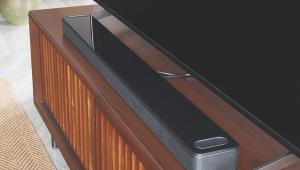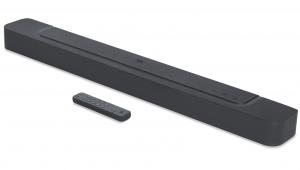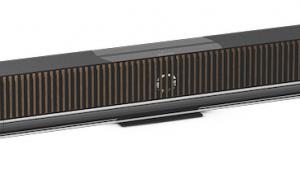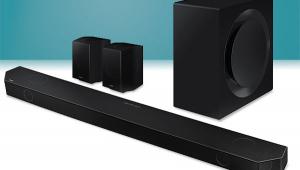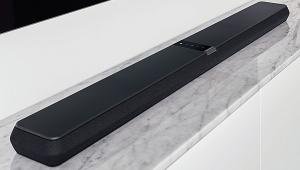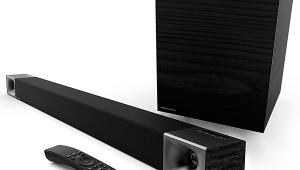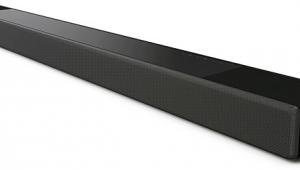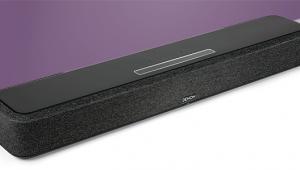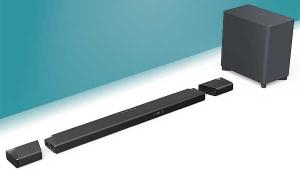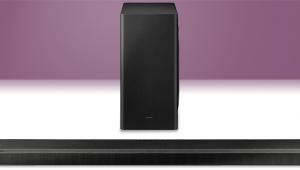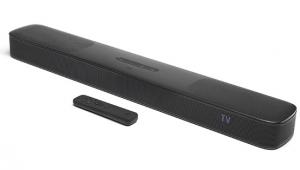Philips Fidelio FB1 Soundbar Review

 Superb sound tuning means Philips' FB1 one-box audio solution puts in a performance that makes its price tag look like a steal. And the feature set ain't bad either, says Mark Craven
Superb sound tuning means Philips' FB1 one-box audio solution puts in a performance that makes its price tag look like a steal. And the feature set ain't bad either, says Mark Craven
Call me easily impressed, but it was within minutes of getting Philips' Fidelio FB1 soundbar up and running that I'd decided I was smitten. Not by its audio performance – at least, not at that point – but by the illuminated ring light that surrounds its two upfiring Dolby Atmos drivers. This light doesn't have to be on all the time (that could get annoying) but it's a clever, bonus design effect that I like.
Other aspects of the Fidelio FB1's aesthetic are equally appealing. This is a fairly large device, measuring the now de rigueur 1.2m wide to partner largescreen TVs, but it wears its size well. Rounded corners on the cabinet give it an air of class, as does the Muirhead leather trim that separates top, front and side panels. The perforated metal grilles also feel robust, but do raise one slight niggle – by having to shine through this, rather than a soft-fabric cover, Philips' text display, located on the right side of the 'bar, can be hard to see at times.
Reading The Runes
The FB1 is probably in little danger of being confused with Philips' previous Fidelio B1 soundbar (HCC #275), because that was a compact 'nano cinema' design for discreet setups, but does make me wonder what the F stands for this time around. Whatever it is, you'll see it later this year on the FS1 and FW1, wireless surround speakers and wireless subwoofer respectively. Alongside the FB1 bar, these form a new audio ecosystem, making use of the DTS Play-Fi platform to improve interoperability. Spend more than the £699 of the FB1 and you can get an all-encompassing multichannel setup. And, yes, the wireless speakers also rock some slick illumination.
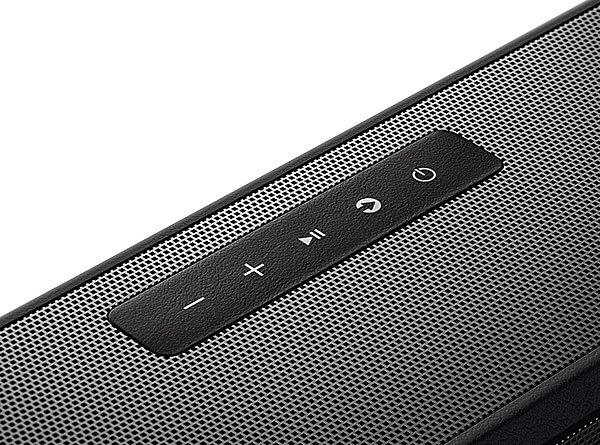
It's all quite ambitious, and Philips has nailed the design language so these F series models appear closely related. I'm not convinced that adding extra bits of kit to a new soundbar is the way most buyers want to go, particularly when rivals Samsung and LG sell full systems out of the box. I'm also not convinced the FB1 really needs a partnering subwoofer, but more on that later.
In its standalone guise, the FB1 claims a 5.1.2 channel count (and '7.1.2' soundstage), using 15 drivers running off a rated 310W of amplification. Height details are handled by the aforementioned upfirers, while LFE comes from a central in-built 'subwoofer' enclosure featuring dual drivers. Arranged along the front are three D'Appolito-style arrays for the LCR channels, and the side of the bar then hides full-range surround units.
Whether or not HDMI inputs (in addition to an ARC connection) are warranted on a soundbar is something of a hot topic around the AV watercooler. Speak to some brands and they'll tell you that anything above a certain price point (around £500, say) simply has to have them or will appear underspecified. Then chat to Bowers & Wilkins about its Panorama 3 (HCC #332) and it'll tell you that buyers these days only need a connection to their TV. Philips is obviously in the former camp, endowing the FB1 with a dedicated HDMI input as well as eARC, plus DTS:X decoding to boot. This makes it a good option for those with a 4K disc player. Other connections are optical and USB (which supports MP3, WAV and FLAC file playback), plus Bluetooth and Wi-FI.
DTS Play-Fi provides the backbone of Philips Sound app, bringing with it streaming service integration (Tidal, Amazon Music, Spotify, Qobuz, Deezer and a 'net radio client included); playback of network stored music (with hi-res support); and multiroom potential with other Play-Fi products. It's pretty slick, with a quick setup process and the welcome addition of hi-res tags for music services.
 |
Home Cinema Choice #351 is on sale now, featuring: Samsung S95D flagship OLED TV; Ascendo loudspeakers; Pioneer VSA-LX805 AV receiver; UST projector roundup; 2024’s summer movies; Conan 4K; and more
|


